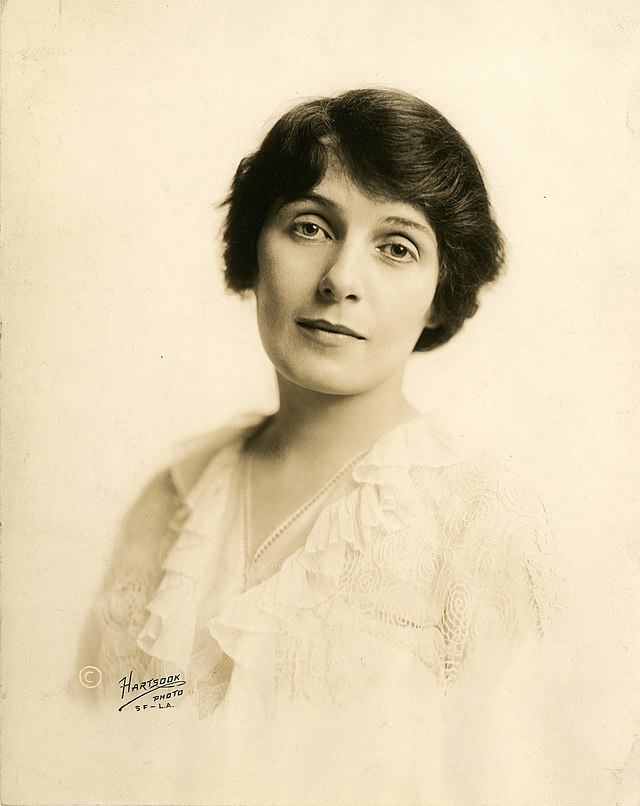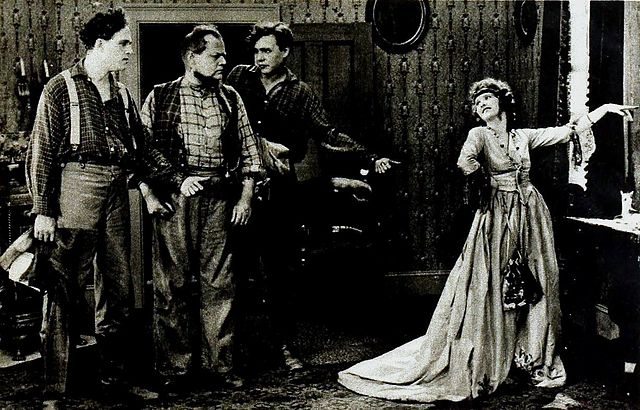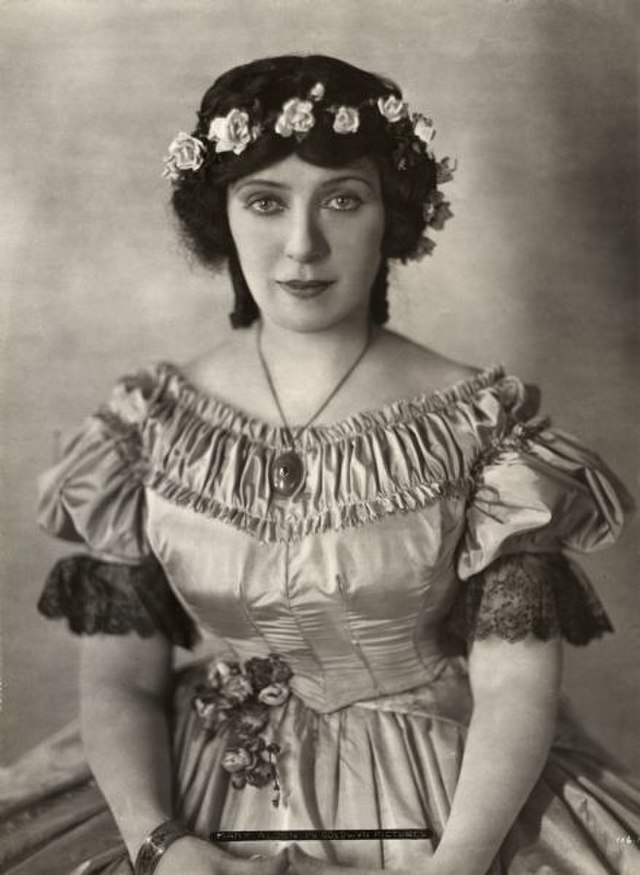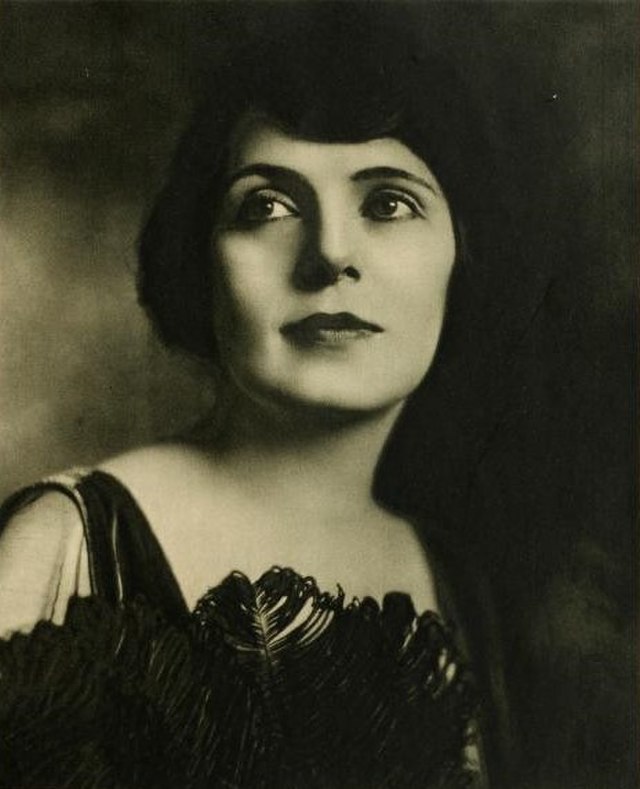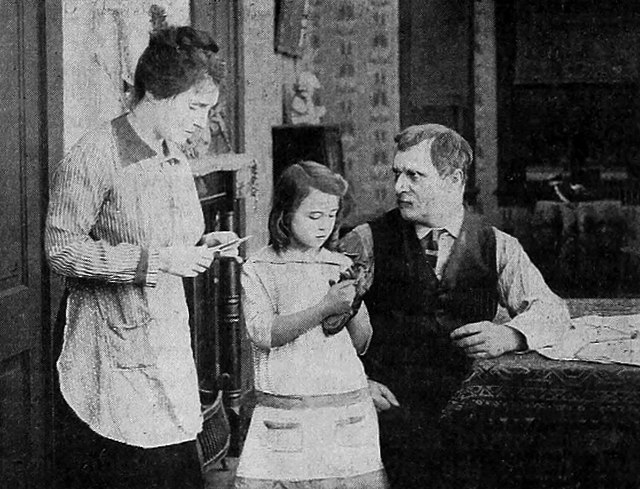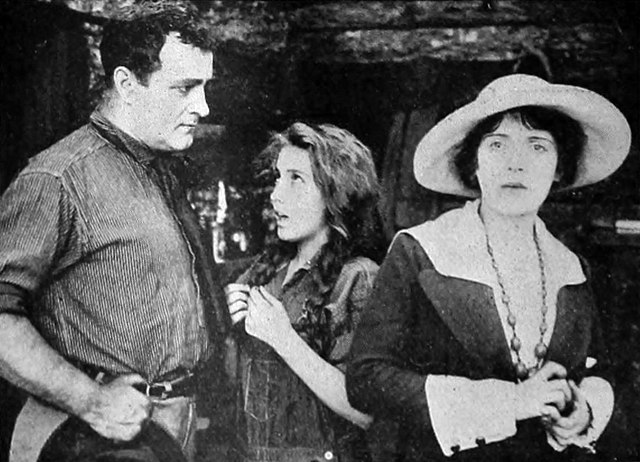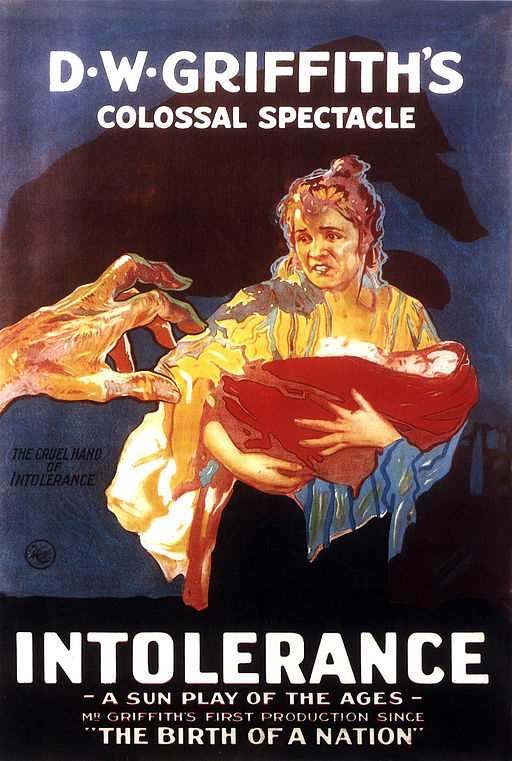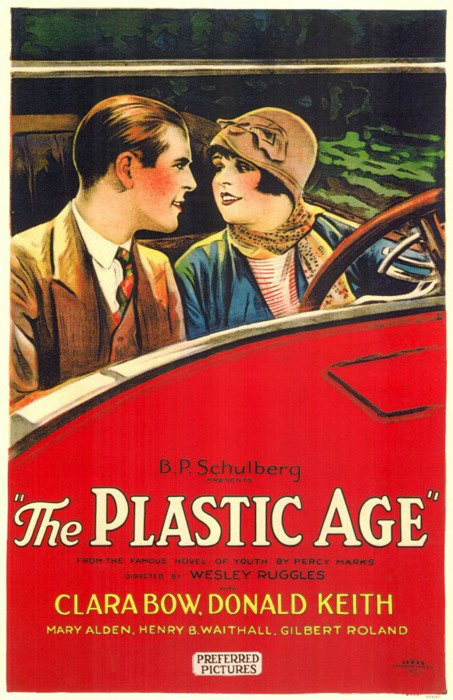Mary Alden
back| Full Name | Mary Maguire Alden |
| Stage Name | Mary Alden |
| Born | June 18, 1883 |
| Birthplace | New York City, New York, USA |
| Died | July 2, 1946 |
| Buried | Pierce Brothers Valhalla Memorial Park, North Hollywood, California, USA |
| Married to | Not married |
| Children | No children |
| Notable films | The Birth of a Nation (1915) - Intolerance (1916) - The Eyes of the World (1917) - The Children Pay (1916) - The Plastic Age (1925) |
Mary Alden
The Grande Dame of Early Hollywood
Mary Maguire Alden began her career on the stage before transitioning to film, becoming one of the first Broadway actresses to make a successful leap to the silver screen.
Alden's early film career is most noted for her work with director D.W. Griffith. She made a significant impact in The Birth of a Nation (1915), one of the most influential and controversial films in cinema history.
Throughout the silent film era, Alden appeared in numerous productions, showcasing her versatility and depth as an actress. Her filmography includes notable titles such as The Eyes of the World (1917) and The Children Pay (1916). In 1921, she starred in The Old Nest, a drama that was well-received by audiences and critics alike.
Related
Mary Alden (1883 – 1946)
Biography and Movie Career:
Mary Maguire Alden was born on June 18, 1883, in New York City, New York. Growing up in the bustling heart of America, Alden was exposed to the vibrant cultural life that the city had to offer. Her interest in the performing arts was piqued at a young age, and she pursued her passion by studying drama and engaging in theatrical productions.
Path Towards Success
Alden began her career on the stage, where she honed her craft and developed a reputation for her acting prowess. Her talent did not go unnoticed, and soon she was drawn to the burgeoning film industry. The transition from stage to screen was a natural progression for many actors of the time, and Alden made the leap with remarkable success.
In the early 1910s, Alden moved to Hollywood, where she caught the attention of pioneering filmmaker D.W. Griffith. She was cast in his groundbreaking film The Birth of a Nation (1915), playing the role of Lydia Brown. The film, despite its controversial content, was a monumental success and established Alden as a significant figure in silent cinema. She followed this with another notable performance in Griffith's Intolerance (1916), where she continued to demonstrate her versatility and skill.
Career Highlights
Throughout the silent film era, Alden appeared in numerous productions. Some of her most important works include:
- The Eyes of the World (1917)
- The Children Pay (1916)
- The Old Nest (1921)
Her performances were characterized by a deep emotional range and a compelling screen presence. Alden's ability to convey complex characters made her a sought-after actress in Hollywood.
Personal Life
Despite her professional success, Mary Alden's personal life was relatively private. There are no records of her being married or having children, and she seemed to have dedicated much of her life to her career. Her passion for acting and the arts was evident in her extensive body of work.
Later Years and Transition
As the film industry transitioned from silent films to "talkies," many silent film stars found it challenging to adapt. Alden continued to work in films during the 1920s and early 1930s, although her roles became less prominent. She managed to maintain a presence in the industry, demonstrating her resilience and adaptability.
Death and Legacy
Mary Alden passed away on July 2, 1946, in Woodland Hills, Los Angeles, California. She was buried at Pierce Brothers Valhalla Memorial Park in North Hollywood. The cause of her death was not widely publicized, but it marked the end of an era for one of the silent screen's most memorable actresses.
Alden's legacy in the film industry is significant. She was part of the foundational years of Hollywood, contributing to some of the earliest and most influential films in cinema history. Her performances in The Birth of a Nation and Intolerance remain notable for their impact on film and culture.
In conclusion, Mary Alden's life was marked by a deep commitment to her craft. She navigated the early film industry with grace and talent, leaving behind a body of work that continues to be studied and appreciated by film historians and enthusiasts alike. Her contributions helped shape the silent film era, and her legacy endures as a testament to her skill and dedication as an actress.
Famous Silent Movie Actresses including Mary Alden:
Naturalistic Acting Style of Mary Alden:
Mary Alden's acting style was marked by a unique blend of emotional depth, subtlety, and versatility, which made her one of the memorable actresses of the silent film era.
Emotional Depth and Realism
- Subtle Expressiveness:
Unlike many of her contemporaries who often relied on exaggerated gestures typical of stage acting, Alden's performances were noted for their subtlety. She had a remarkable ability to convey deep emotions through slight facial expressions and nuanced body language, which was crucial in silent films where dialogue could not be used to express feelings.
- Naturalistic Approach:
Alden brought a naturalistic approach to her roles, making her characters feel real and relatable. This was particularly evident in her portrayal of complex, emotionally driven characters who faced personal and societal challenges. Her ability to inhabit these roles fully, with genuine emotion, helped her connect with audiences on a profound level.
Versatility
- Range of Roles:
Alden's versatility was a significant aspect of her acting style. She seamlessly transitioned between different types of characters, from the scheming Lydia Brown in The Birth of a Nation to the nurturing mother in The Old Nest. Her ability to adapt to various roles showcased her broad acting range and depth of talent.
- Transformation:
In each role, Alden demonstrated a strong capacity for transformation. She could embody the innocence and vulnerability of a young woman, the strength and resilience of a mother, or the cunning and manipulation of a villainous character. This transformative ability allowed her to stand out in an era when typecasting was common.
Screen Presence
- Commanding Presence:
Alden had a commanding screen presence that drew audiences in. Her performances were often marked by a strong sense of confidence and poise, which allowed her to dominate the screen even in ensemble casts or supporting roles.
- Physicality:
Despite the limitations of silent film, where dialogue was absent, Alden used her physicality to great effect. Her gestures, movements, and positioning were all meticulously crafted to enhance her character's persona and the story's emotional impact.
Collaboration with Directors
- Working with D.W. Griffith:
Alden's collaborations with directors like D.W. Griffith played a significant role in shaping her acting style. Griffith's emphasis on naturalism and emotional authenticity in his films complemented Alden's strengths, allowing her to deliver some of her most memorable performances.
- Adaptability to Direction:
Alden was highly adaptable to different directors' styles and demands. Whether working in melodramas, historical epics, or intimate character studies, she could align her performances with the director's vision while bringing her unique touch to each role.
Impact of Silent Film Era
- Expression through Silence:
The silent film era required actors to express themselves without spoken words, relying heavily on visual and physical expression. Alden mastered this art, using her expressive eyes, subtle gestures, and body language to convey complex emotions and narratives.
- Influence on Later Performances:
The skills Alden developed during the silent film era continued to influence her performances even as the industry transitioned to sound films. Her grounding in silent film techniques allowed her to maintain a strong screen presence and emotional authenticity.
Enduring Legacy
- Pioneering Female Actress:
As one of the early female actresses in Hollywood, Mary Alden set a standard for future generations. Her dedication to her craft and her ability to navigate the industry's evolving demands left a lasting legacy.
- Inspiration for Future Actresses:
Alden’s acting style, marked by its depth, versatility, and realism, has inspired many actresses who followed. Her ability to portray a wide range of characters with emotional truth and authenticity remains a benchmark for actors in both silent and sound films.
Awards and Recognition:
Mary Alden was a prominent actress during the silent film era, known for her versatile and emotive performances. Despite her significant contributions to early cinema, she did not receive any major awards or nominations during her career.
Mary Alden's Filmography
1915 - The Birth of a Nation
A silent epic film by D.W. Griffith that chronicles the American Civil War and the Reconstruction era, focusing on two families affected by the events.
1916 - Intolerance
A groundbreaking silent film by D.W. Griffith, intertwining four parallel storylines from different historical periods to illustrate the destructive nature of intolerance.
1916 - The Children Pay
A silent drama that explores the repercussions of divorce on children, highlighting the emotional and social challenges they face.
1917 - The Eyes of the World
A silent film adaptation of Harold Bell Wright's novel, revolving around the lives of an artist and his muse amidst societal expectations and personal struggles.
1921 - The Old Nest
A drama depicting the life of a mother as she nurtures her children and witnesses them growing up and leaving the family home, capturing the essence of familial bonds.
1922 - The Strangers' Banquet
A silent drama focusing on the lives of various characters who come together at a banquet, revealing their personal stories and societal issues.
1923 - The Sin Flood
A disaster film about a group of people trapped in a building during a devastating flood, highlighting their struggles for survival and personal redemption.
1923 - The Woman with Four Faces
A silent crime drama featuring a woman who adopts multiple identities to solve a mystery and bring criminals to justice.
1924 - The Mine with the Iron Door
An adventure film set in the American Southwest, following the quest for a legendary hidden treasure and the dangers encountered along the way.
A silent drama exploring the societal pressures and personal dilemmas faced by a young woman in the context of love and marriage.
1925 – The Plastic Age
A silent romantic comedy about an athletic star and a girl who loves to party.
1925 - The Mad Whirl
A drama about the moral dilemmas and societal changes faced by a young couple during the Roaring Twenties, capturing the era's spirit and challenges.
1926 - The Scarlet Letter
An adaptation of Nathaniel Hawthorne's classic novel, focusing on the story of Hester Prynne and her struggles with sin, guilt, and redemption in Puritan New England.
1926 - The Midnight Message
A silent crime drama involving a thrilling narrative of crime, intrigue, and the pursuit of justice.
1927 - The Lone Eagle
An aviation-themed film following the adventures and heroics of a pioneering pilot.
1927 - The Notorious Lady
A drama centered on the life and scandals of a woman with a notorious reputation, exploring themes of morality and redemption.
1927 - The Red Mill
A comedy film set in a picturesque Dutch village, involving romantic entanglements and humorous situations.
1928 - The Trail of '98
A historical adventure film depicting the harrowing journey of gold prospectors during the Klondike Gold Rush.
1929 - His Captive Woman
A romantic drama about the complicated relationship between a man and the woman he rescues from an island, exploring themes of captivity and love.
1930 - Mammy
A musical drama starring Al Jolson, focusing on the life and career of a minstrel show performer.
1930 - Kismet
An adventure film set in the exotic locales of the Middle East, featuring a tale of fate, love, and adventure.
1930 - The Lottery Bride
A musical film involving a young woman who becomes involved in a lottery to marry a wealthy man, leading to unexpected romantic complications.
1931 - Dirigible
An adventure film about the daring exploits of airship pilots and their ambitious expedition to the South Pole.
1931 - The Deceiver
A mystery drama involving a series of deceptions and revelations, culminating in a dramatic resolution of the central mystery.

